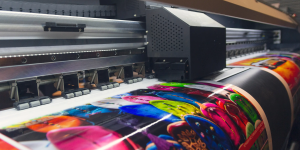Introduction to Printing Digital Pictures
In today’s digital age, capturing moments through photographs has become easier than ever. With the rise of smartphones and digital cameras, people are constantly snapping pictures, documenting their lives, and preserving memories. However, in the midst of this digital revolution, the art of printing digital pictures often gets overlooked. In this comprehensive guide, we’ll explore everything you need to know about printing digital pictures, from selecting the right printer to optimizing your images for the best possible results.
Choosing the Right Printer for Digital Picture Printing
The first step in achieving high-quality prints of your digital pictures is selecting the right printer. There are various types of printers available on the market, each with its own set of features and capabilities. Inkjet printers are popular for their versatility and ability to produce vibrant colors, making them an excellent choice for printing photos. On the other hand, dye-sublimation printers offer professional-grade results with smooth gradients and continuous tones, ideal for photographers looking for gallery-worthy prints. Consider your printing needs and budget carefully before making a decision.
Understanding Resolution and Image Quality
Before sending your digital pictures to the printer, it’s essential to understand resolution and image quality. Resolution refers to the number of pixels per inch (PPI) in an image, while image quality determines the sharpness and clarity of the printed output. For the best results, ensure that your digital pictures have a high enough resolution for printing. Typically, a resolution of 300 PPI is recommended for crisp, detailed prints. Additionally, pay attention to factors such as file format and color space to preserve the integrity of your images during the printing process.
Calibrating Your Monitor and Printer
Achieving accurate colors in your printed digital pictures requires proper calibration of both your monitor and printer. Calibration ensures that the colors you see on your screen match those produced by your printer, resulting in consistent and true-to-life prints. Invest in a color calibration tool or software to calibrate your monitor and printer regularly, taking into account factors such as ambient lighting and paper type. By calibrating your devices, you’ll avoid discrepancies in color reproduction and achieve more predictable results with each print.

Choosing the Right Paper for Printing
The type of paper you use can significantly impact the final appearance of your printed digital pictures. Photo paper comes in various finishes, including glossy, matte, and satin, each offering unique characteristics and aesthetic appeal. Glossy paper enhances color saturation and contrast, making it ideal for vibrant, high-contrast images. Matte paper, on the other hand, offers a softer, more subdued look with minimal glare, perfect for portraits and fine art prints. Consider the subject matter and desired effect when selecting the appropriate paper for your prints.
Optimizing Your Images for Printing
Before hitting the print button, take the time to optimize your digital pictures for the best possible results. Start by ensuring proper exposure, contrast, and color balance during the editing process. Use photo editing software to adjust brightness, saturation, and sharpness, taking care not to over-process the images. Pay attention to composition and cropping to eliminate distractions and focus on the main subject. Finally, resize your images to the desired dimensions for printing, maintaining the recommended resolution for optimal quality.
Printing Your Digital Pictures
With your images optimized and ready to print, it’s time to put your printer to work. Ensure that your printer is loaded with the appropriate paper type and size, and double-check the print settings for accuracy. Select the highest quality print mode for the best results, and consider performing a test print before printing multiple copies. Monitor the printing process closely, and inspect the output for any imperfections or inconsistencies. With careful attention to detail, you’ll be able to produce professional-quality prints of your digital pictures with ease.
Printing digital pictures is a rewarding process that allows you to bring your memories to life in tangible form. By following the tips and techniques outlined in this guide, you can ensure that your prints showcase the beauty and significance of your digital photographs. From choosing the right printer and paper to optimizing your images for printing, each step plays a crucial role in achieving stunning results. With practice and patience, you’ll master the art of printing digital pictures and create timeless keepsakes that you can cherish for years to come.
Spectrum Digital Print Solutions DIFC
Spectrum Digital Print Solutions DIFC is a renowned printing company that specializes in delivering high-quality digital printing services to clients in the Dubai International Financial Centre (DIFC) and beyond. With state-of-the-art printing equipment and a team of experienced professionals, Spectrum Digital Print Solutions DIFC offers a comprehensive range of printing solutions tailored to meet the diverse needs of businesses and individuals. From business cards and brochures to large-format banners and signage, Spectrum Digital Print Solutions DIFC provides end-to-end printing services to help clients effectively communicate their brand messages and stand out in the competitive marketplace. With a commitment to quality, innovation, and customer satisfaction, Spectrum Digital Print Solutions DIFC remains a trusted partner for all printing needs.






